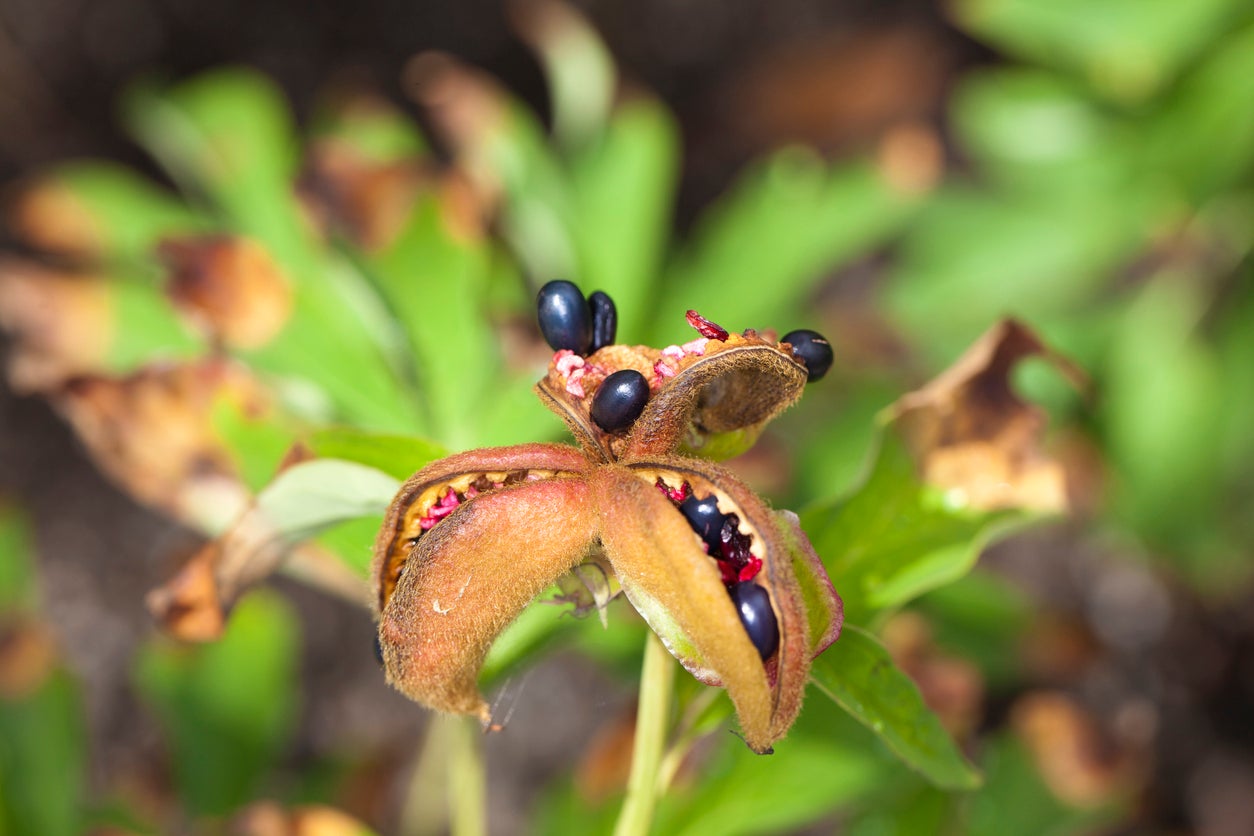Harvesting Peony Seed Pods – What To Do With Peony Seed Pods


Whether herbaceous, Itoh or tree type, peony flowers always add a graceful, classic touch to flower. Hardy in zones 3-8, peonies are pretty tough perennial or woody landscape plants. Throughout history, peonies have been cultivated for variety of uses. Today, they are mostly grown for their exquisite, but sometimes short-lived blooms. After their blooms fade, flower stalks are usually cut back and plants are trimmed back to a smaller, round shape. Peonies form interesting, clusters of wedge-like gray to brown seed pods, covered when young with a slight fuzz. As they mature, the seed pods turn dark brown and leathery, and as they ripen, the seed pods crack open, revealing dark purple to black shiny seeds. They can add interest to the garden and allow you to harvest seeds for peony propagation. Continue reading for tips on collecting peony seeds.
Harvesting Peony Seed Pods
When grown from seed, peony plants will not form into true types. Forms of asexual propagation, such as cuttings or divisions, are the only way to produce true clones of peony cultivars. You may, however, produce unique bloom variations by propagating peonies from collected seed. Herbaceous perennials are slow to mature, taking 5-6 years to produce. Tree and Itoh peonies will mature much quicker when grown from seed. So when should you remove peony seed pods? Peony seed pod harvest is performed primarily in fall. They should be collected when the seed pods turn dark brown and leathery, and slightly crack open. To ensure that you don't lose seed to birds, small mammals or forces of nature, tie nylon or small mesh bags around maturing seed pods before they split open. After collecting peony seeds, place them in a bowl of water to test their viability. Floaters are sterile and should be discarded. The viable seeds that sink should be rinsed with 10% bleach.
What to Do with Peony Seed Pods
Harvested peony seeds can be planted immediately, directly in the garden or indoors in seedling trays or pots. Peony seedlings require a cycle of warmth-cold-cold in order to produce their first true leaves. In nature, seeds are dispersed on warm late summer to autumn days and quickly germinate. By winter, they form small, but suitable, roots. They lie dormant through winter then burst forth as spring warms the soil. To mimic this natural cycle, peony seed trays or pots can be placed in a drawer in the refrigerator for about three months, then placed in a warm, sunny location. Another space-saving method of peony plant propagation is to place harvested peony seeds in a plastic sandwich bag with moist vermiculite and peat. Keep the bag closed and place it in a dark location with an average temperature of 70-75 F. (21-24 C.) until roots begin to form in the bag. Then place the bag in the refrigerator’s crisper until plants can be planted outdoors in the spring.
Gardening tips, videos, info and more delivered right to your inbox!
Sign up for the Gardening Know How newsletter today and receive a free copy of our e-book "How to Grow Delicious Tomatoes".
-
 12 Lush Alternatives To A Lawn For Sustainable Spaces
12 Lush Alternatives To A Lawn For Sustainable SpacesAlternatives to a lawn are beautiful and also beneficial to your local ecosystem and its pollinators. Explore our top picks for plants to replace grass.
By Tonya Barnett
-
 Types Of Tomatoes Explained: Explore The Many Wonderful Shapes, Colors, Flavors, & Best Uses
Types Of Tomatoes Explained: Explore The Many Wonderful Shapes, Colors, Flavors, & Best UsesThe world of tomato varieties is vast and fascinating. Learn about the key types to grow in your garden, tailored to your preferences and space.
By Amy Grant